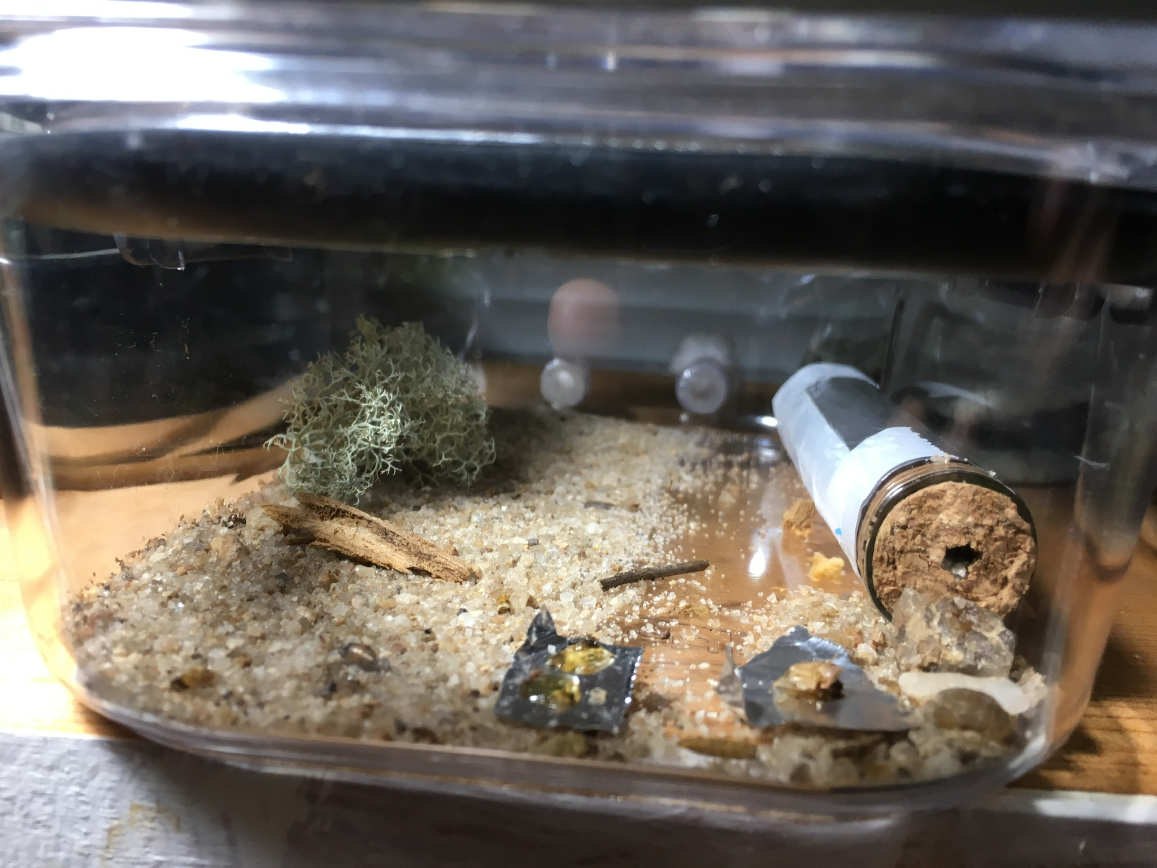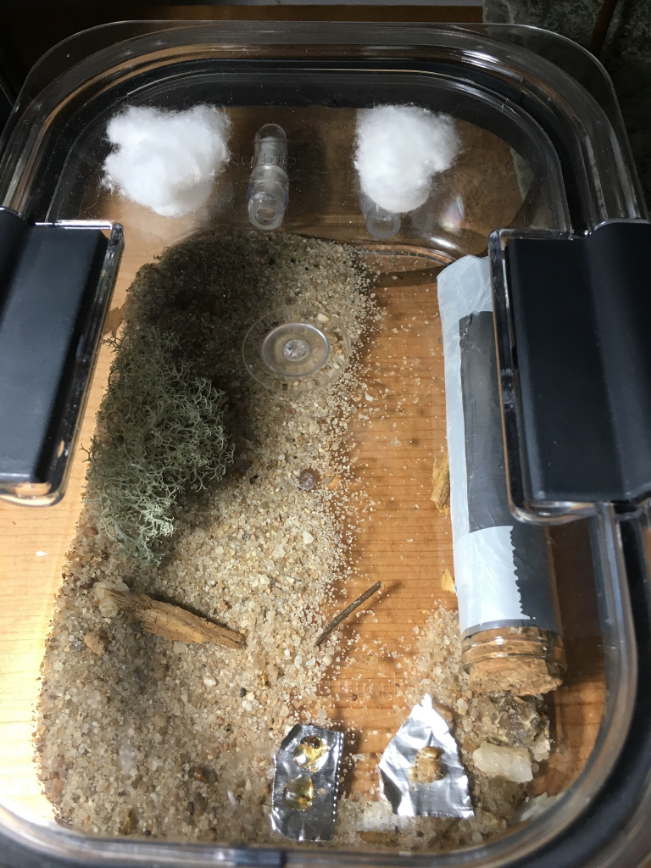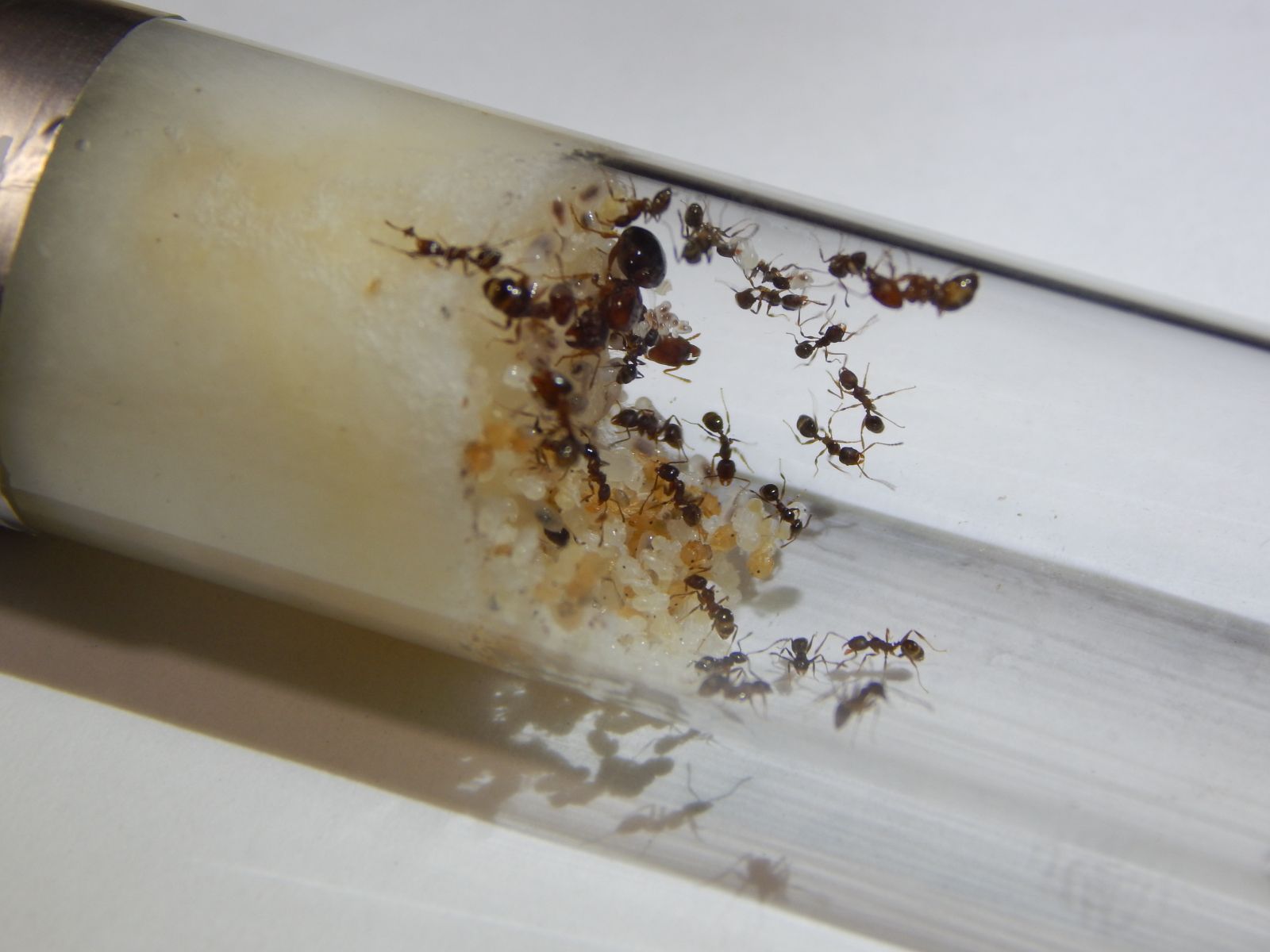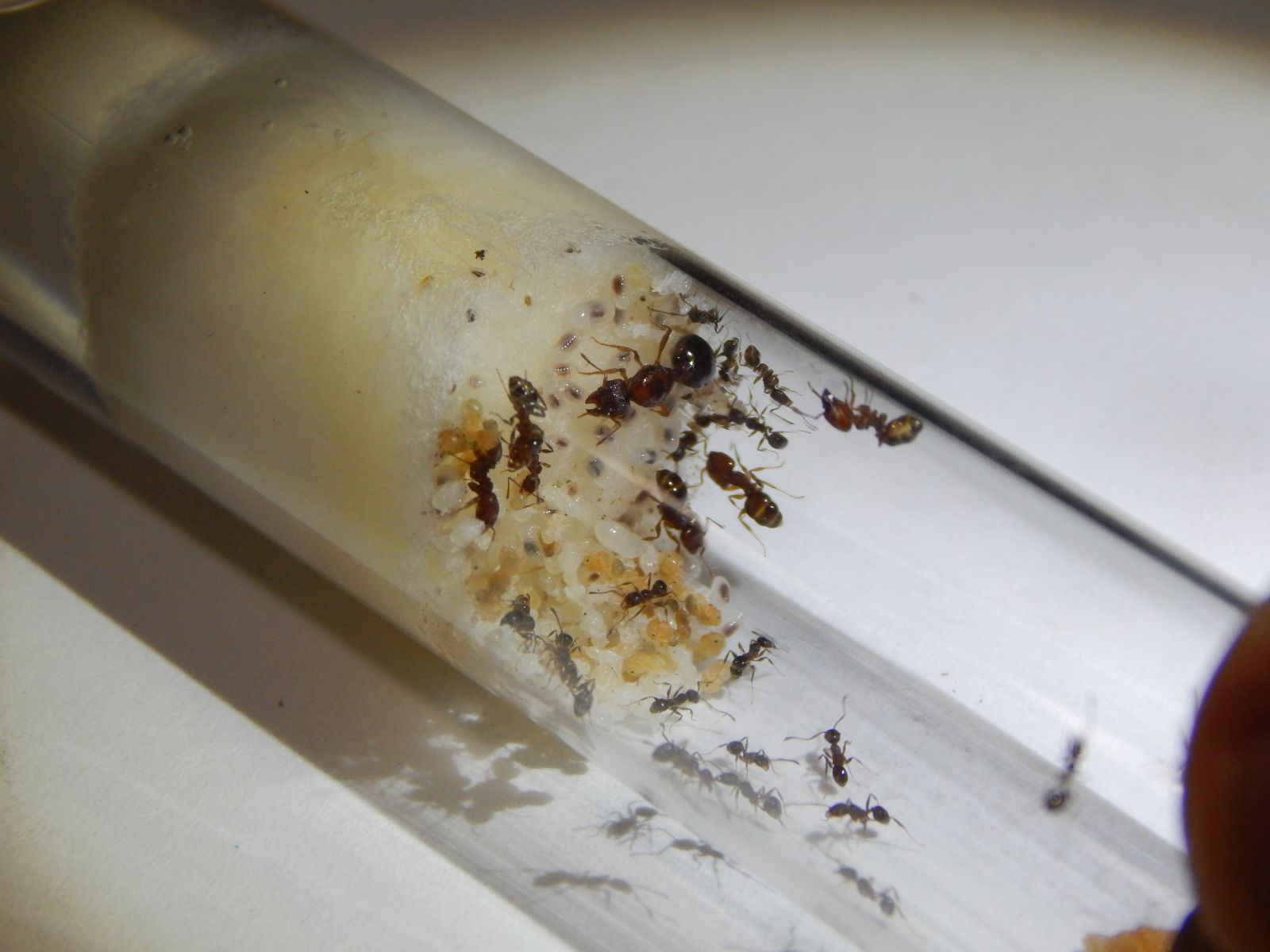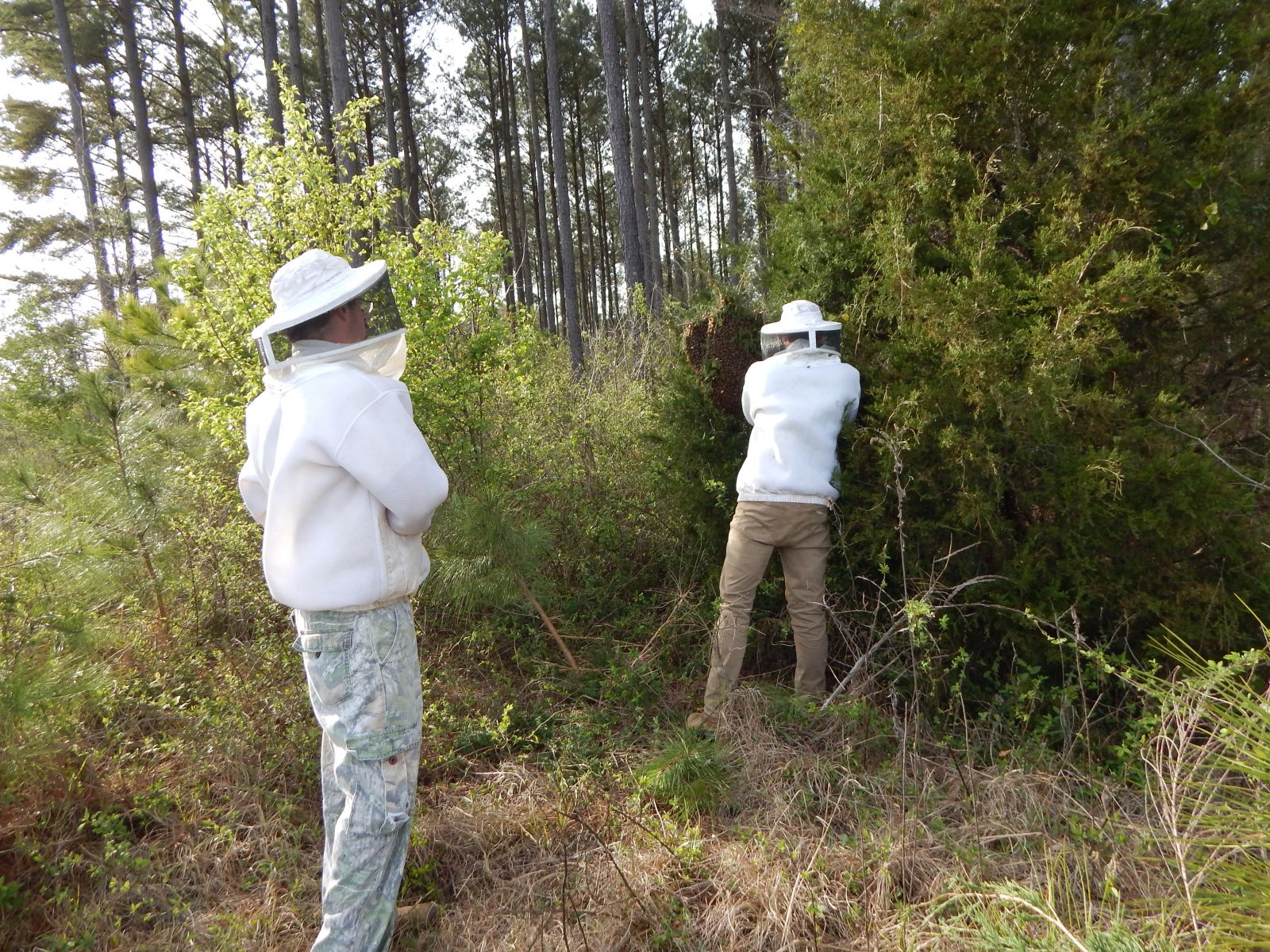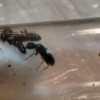I got these girls while anting in the woods of my property. They were in an old and rotting pine log. The colony was actually quite sizeable and I still can't believe I spotted a queen (I think these ladies can have polygynous colonies). I managed to obtain her majesty, around fifteen workers, and a little bit of brood. IDing this species was a HASSLE.
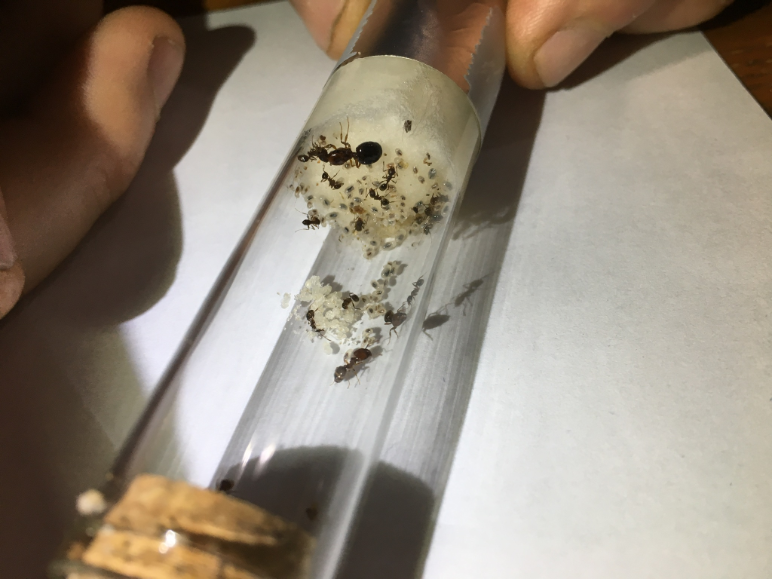
So, I was flipping rocks at a buddy's house (isn't that what we're supposed to do? see a rock...flip a rock?) and flipped one to find a TON of P. crassicornis brood under the rock...I managed to rob a mix of larvae and eggs (~60) and get them into a test tube before the colony took the rest down...naturally I wanted to see if my ants would accept the brood boost. Well...a LOT of the larvae you see in this picture is larvae from the brood boost that I dumped into their outworld. 3/15/2019




